Arnhem, Province of Gelderland, Netherlands 作者: 来源: 发布时间:2021-02-21
一、人口,面积,所属地区
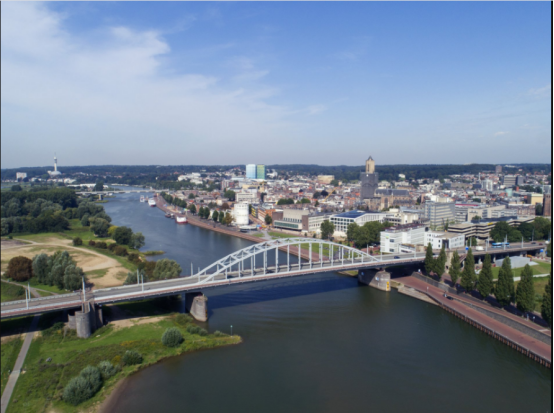
Country Netherlands
Province Gelderland
Location in the Netherlands
Government:
Body Municipal council
Mayor Ahmed Marcouch (PvdA)
Area:
Municipality 101.54 km2 (39.20 sq mi)
Land 97.99 km2 (37.83 sq mi)
Water 3.55 km2 (1.37 sq mi)
Elevation 13 m (43 ft)
Population (Municipality, January 2019; Urban and Metro, May 2014)
Municipality 159,265
Density 1,625/km2 (4,210/sq mi)
Urban 152,850
Metro 361,048
Demonym(s) Arnhemmer
Postcode 6800–6846
Area code 026
Website www.arnhem.nl
Arnhem is a city and municipality situated in the eastern part of the Netherlands. It is the capital of the province of Gelderland and located on both banks of the rivers Nederrijn and Sint-Jansbeek, which was the source of the city's development. Arnhem had a population of 159,265 in 2019 and is one of the larger cities of the Netherlands. The municipality is part of the Arnhem–Nijmegen metropolitan area which has a combined 736,500 inhabitants.
Arnhem is home to the Hogeschool van Arnhem en Nijmegen, ArtEZ Institute of the Arts, Netherlands Open Air Museum, Airborne Museum 'Hartenstein', Royal Burgers' Zoo, NOC*NSF and National Sports Centre Papendal. The north corner of the municipality is part of the Hoge Veluwe National Park. It is approximately 55 square kilometers in area, consisting of heathlands, sand dunes, and woodlands.
二、自然地理
Neighbourhoods
The municipality of Arnhem consists of the city of Arnhem and the following surrounding suburbs and former villages:
lden, Netherlands (former village, now totally surrounded by other Arnhem neighbourhoods)
Schaarsbergen
Arnhem consists of three districts (stadsdelen) and 24 neighbourhoods (wijken). Each neighbourhood has a number which corresponds to its postal code.
1, Arnhem Centrum (Binnenstad)
2, Arnhem-North (Spijkerkwartier, Arnhemse Broek, Presikhaaf-West, Presikhaaf-East, St. Marten/Sonsbeek-Zuid, Klarendal, Velperweg, Alteveer en Cranevelt, Geitenkamp, Monnikenhuizen, Burgemeesterswijk/Hoogkamp, Heijenoord/Lombok, Klingelbeek)
3, Arnhem-South (Malburgen-West, Malburgen-East (North), Malburgen-East (South), De Laar East/West, Vredenburg/Kronenburg, Elderveld, Rijkerswoerd, Schuytgraaf)
Neighbouring villages
The outlying areas of the following villages are bordering the municipality of Arnhem directly, which means among others that in many a case a considerable number of their inhabitants originate from Arnhem.
Proximity of border with Germany
The city lies a few kilometers from the border with Germany, and to some extent the westernmost villages in the municipality of Elten, Germany, function as dormitories for people who work in the Dutch city of Arnhem in part due to the immigration of Dutch people from the region that were attracted by the lower house pricing just across the border.
Transport
Arnhem has had a main central railway station since 1845 – Arnhem Centraal railway station, which is serviced by several intercity lines and the Intercity-Express to Düsseldorf and further on to Frankfurt.
Until 2016, there were also NS International trains to other destinations abroad, with some coaches going as far as Moscow.
The intercity lines provide direct connections to Utrecht, Nijmegen and Zutphen. It is also the terminus for several local railway services. Arnhem has three other stations, namely Arnhem Velperpoort (since 1953), Arnhem Presikhaaf (since 1969) and Arnhem Zuid (since 2005).
KLM Royal Dutch Airlines operates a bus from the train station to Schiphol Airport for KLM customers. Arnhem is unique in the Netherlands with its trolleybus system.
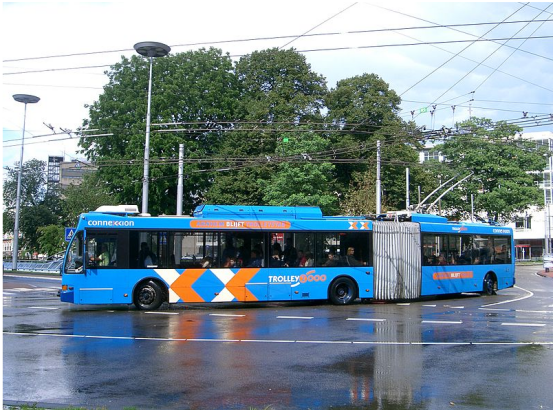
Trolleybus in Arnhem
三、经济发展和规模
The City of Arnhem is going through a period of economic stability at the moment. However, the economic policy is aiming to simulate three economic sectors in which the city has good development chances and where it expects to realise a continuing growth.This is :
• The creative industry [fashion and design];
• Energy and environmental technology [hydrogeneconomy];
• The health sector.
The tourism sector also is a sector with a potential for further development.

The Arnhem – Nijmegen region consists of eighteen municipalities working closely together on various spearheads, such as sustainability, the housing market, the economy and logistics. The region’s top sectors are Food, Health and Energy. The urban network Arnhem – Nijmegen is an economic powerhouse in the east of the Netherlands.
四、产业特点/重点项目
Liander N.V.
Industry Electric utility
Founded 2008
Headquarters Arnhem, Netherlands
Products Natural gas sale and distribution, electricity distribution
Website: www.liander.nl
Liander is a Dutch utility company which operates in the distribution of electricity and natural gas in part of the Netherlands. Liander NV is the largest utility company in the Netherlands, managing the energy network in the provinces of Gelderland and Noord-Holland entirely, and in large parts of Flevoland, Friesland and Zuid-Holland.
Liander NV was formerly known as Continuon, and is now a division of the umbrella-company Alliander. Alliander includes also Liandon (formerly Nuon Tecno), focused on building and maintenance of large energy infrastructures, and Lyandin (formerly Dynamicom) that operates in lighting of public spaces.
Liander was split from the Nuon group in July 2008 and since 12 November 2008 it has operated under the new name Liander. Nuon continues to operate as a production and supply company, under the name Nuon Energy.
五、风景名胜,景点
The Grote Kerk (St. Eusebius' Church), built 1452–1560, lost most of its tower during World War II, of which a part has been reconstructed to a modern design and opened in 1964. Officially the tower is not part of the church and is owned by the municipality.
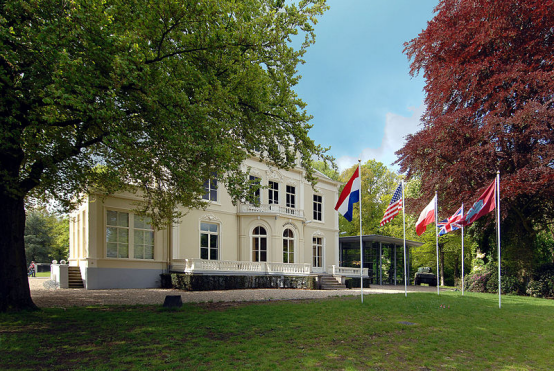
The house of Maarten van Rossum, a general serving Duke Charles van Gelre, has been the town hall since 1830: The satyrs in its Renaissance ornamentation earned it the name Duivelshuis (devil's house). The Netherlands Open Air Museum is located outside the city. It includes antique houses, farms, factories, and windmills from different parts of the Netherlands. Two other windmills stand in Arnhem itself, De Hoop and De Kroon.
The Royal Burgers' Zoo in Arnhem is one of the biggest and most-visited zoos in the Netherlands, featuring an underwater walkthrough, desert, mangrove, and rainforest. The GelreDome, the home of Vitesse Arnhem, the city's Eredivisie team in football, is a unique facility that features a retractable roof and a slide-out grass pitch. The concept has been fully duplicated since then by the Veltins-Arena in Gelsenkirchen, Germany, and State Farm Stadium in Glendale, Arizona, U.S., and partially by the Sapporo Dome in Japan (which has a sliding pitch but a fixed roof).
The KEMA Toren (formerly known as SEP Control Tower) is the highest structure of the town. It is a 140-m-high TV tower.
Museums in and around Arnhem
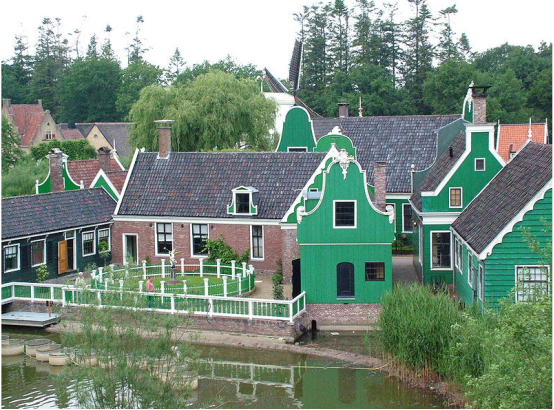
The Airborne Museum Hartenstein, formerly the Hotel Hartenstein and the HQ of 1st Airborne Division during the Battle of Arnhem.
Information Centre Battle of Arnhem, an appendix near the John Frost Bridge in Arnhem
Airborne Museum 'Hartenstein'
Utrechtseweg 232
6862 AZ Oosterbeek Netherlands
tel. 00 31 26 3337710 fax 00 31 26 3391785
www.airbornemuseum.org/algemeen/general_uk.htm
The Airborne Museum is situated in the centre of Oosterbeek and is conveniently signposted (guide). A direct trolleybus service connects the Museum with Arnhem railway station. From Oosterbeek railway station to the Museum is a mere 10 minutes walk.
The Museum shows the course of events during the Battle of Arnhem. It took place in September 1944 and covered the area between the centre of Arnhem and Ede. The 'Battle for the Rhine Bridge' was part of the operation 'Market Garden'. British, American and Polish airborne forces were to capture the bridges over rivers and waterways from the Belgian border to Arnhem
The ground forces comprising the second British Army, could then reach the German Ruhr in one long thrust. Thus, it was thought, the war would be over by Christmas 1944. The operation, however, failed on account of the unexpectedly strong German resistance the paras were unable to hold the bridge and the Allied ground forces did not succeed in reaching Arnhem.

Netherlands Open Air Museum

Gemeentemuseum
Netherlands Water Museum is a modern, interactive museum dedicated to all aspects of freshwater not only in the Netherlands, but in the rest of the world as well. Freshwater is becoming ever scarcer in the world and even leads to wars. Water is expected to become as expensive as oil. It is thus for a good reason that the UN declared the 21st century to be the Freshwater Century.
Address:
Zijpendaalseweg 26-28, 6814CL Arnhem
Wine Museum Arnhem
How is wine produced? In the cellars of one of Holland’s oldest wine houses, you will learn all about the production process and different flavors of wine. Naturally you can enjoy a glass of wine, too.
Address: Velperweg 23, 6824BC Arnhem
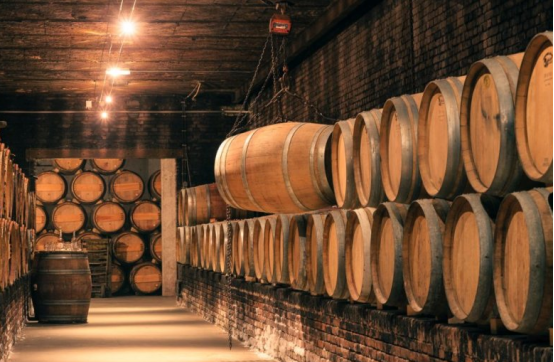
ROSENDAEL PARK AND CASTLE
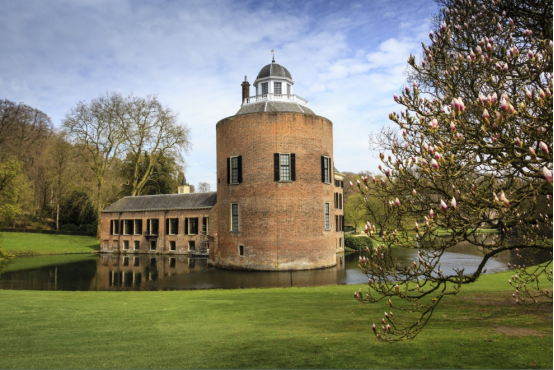
Rosendael Castle (Park en Kasteel Rosendael), the former residence of the Dukes of Guelders, is decorated in period style. The 'Bedriegertjes' fountain, the shell gallery and the teahouse are highlights of the surrounding park. The interior of the castle can be viewed as part of a guided tour. The park is open to visitors both with and without a guide. Tours can be arranged by appointment. Please see the website for opening hours and admission prices.
Contact:Park en Kasteel Rosendael, Rosendael 1, 6891 DA Rozendaal
Call: +31 26 - 355 25 28
HUIS BERGH CASTLE
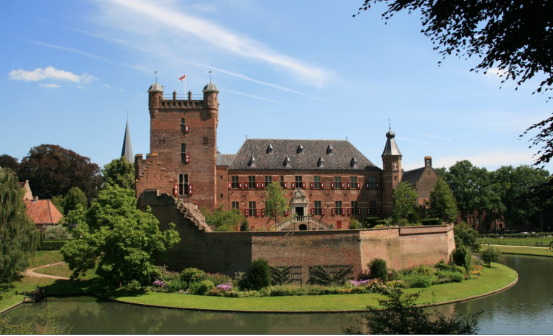
Huis Bergh Castle dates back to the 13th century and is one of the biggest castles in the Netherlands. The castle is the ideal location for an unusual party or a pleasant business gathering. Once a mighty fortress in turbulent times, the castle is now an atmospheric wedding venue for the most special day of your life. The moat surrounding the castle served as a powerful defence. De Plantage (an 18th-century woodland park) is in the castle’s immediate vicinity.
Adresgegevens
Bezoekadres:
Hof van Bergh 8, 7041 AC ‘s-Heerenberg
Postadres: Postbus 155, 7040 AD ‘s-Heerenberg
Telefoon: +31 (0) 314 661 281
Mail: info@huisbergh.nl
https://www.huisbergh.nl/en/
Landgoed Middachten
Enjoy the age-old gardens surrounding Middachten Castle. In addition to lovely lanes, majestic trees and waving lawns there are several ´green rooms´. In the rose garden you can admire the finest roses, and the semicircular border with perennials is a sight for sore eyes. The gardens are a great place to roam around and loose track of time for a while. The castle lies in the heart of the gardens. The special interior can be seen on Sundays in July and August and during events such as Christmas.
Burgers’ Zoo
Explore the world’s deserts, rainforests and oceans: in Burgers’ Zoo, the animals live in their natural habitats, and that makes for a wonderful experience. Sharks, tigers, snakes: you’ve never seen them this way in a zoo before.
When Johan Burgers opened his zoo in 1913, he wanted to do something different. Instead of presenting animals in cages, he wanted to show them in their natural habitat. A hundred years later Burgers’ Zoo still doesn’t present animals to you in the traditional way. You have to enter their habitat.
CONTACT:
T +31 (0)26 442 45 34
E info@burgerszoo.nl
Address: Antoon van Hooffplein 1, 6816SH Arnhem
https://www.burgerszoo.nl/beeldbank/beelden-park
六、历史文化
Early history
The oldest archeological findings of human activity around Arnhem are two firestones of about 70,000 years ago. These come from the Stone Age, when the Neanderthals lived in this part of Europe. In Schuytgraaf, remnants of a hunters camp from around 5000 BC have been discovered. In Schaarsbergen, twelve grave mounds were found from 2400 BC, which brought the so-called Neolithic Revolution to the area of Arnhem, which meant the rise of the farmers.
The earliest settlement in Arnhem dates from 1500 BC, of which traces have been found on the Hoogkamp, where the Van Goyenstraat is currently located. In the inner city, around the Sint-Jansbeek, traces of settlement have been found from around 700 BC, while the first traces south of the Rhine have been found dating to around 500 BC, in the Schuytgraaf.
Though the early tracks of settlements did show that the early residents of Arnhem descended from the forests on the hills, Arnhem was not built on the banks of the river Rhine, but a little higher along the Sint-Jansbeek. Arnhem arose on the location where the road between Nijmegen and Utrecht and Zutphen split. Seven streams provided the city with water, and only when the flow of the Rhine was changed in 1530, was the city located on the river.

Old city hall
Middle Ages
Arnhem was first mentioned as such in 893 as Arneym or Arentheym. In 1233, Count Otto II of Guelders from Zutphen, conferred city rights on the town, which had belonged to the abbey of Prüm, settled in, and fortified it. Arnhem entered the Hanseatic League in 1443. In 1473, it was captured by Charles the Bold of Burgundy.
16th and 17th century
In 1514, Charles of Egmond, duke of Guelders, took it from the dukes of Burgundy; in 1543, it fell to the emperor Charles V. As capital of the so-called "Kwartier van Veluwe" it joined the Union of Utrecht during the Eighty Years' War in 1579. After its capture from the Spanish forces by Dutch and English troops in 1585 the city became part of the Republic of the Seven United Provinces of the Netherlands. The French occupied the town from 1672 to 1674.
18th and 19th century
From 1795 to 1813, it was reoccupied by the French, by both revolutionary and imperial forces.
In the early 19th century, the former fortifications were almost completely dismantled, to give space for town expansion. The Sabelspoort (Sabresgate) is the only remaining part of the medieval walls.
In the 19th century, Arnhem was a genteel resort town famous for its picturesque beauty. It was known as "het Haagje van het oosten" (The Little Hague of the East), mainly because a number of rich former sugar barons or planters from the Indies settled there, as they did in The Hague. Even now the city is famous for its parks and greenery. The urbanization in the north on hilly terrain is also quite unusual for the Netherlands.
The Battle of Arnhem
In the Second World War (1939–1945), during Operation Market Garden (September 1944), the British 1st Airborne Division, under the command of Major-General Roy Urquhart, and the Polish 1st Independent Parachute Brigade were given the task of securing the bridge at Arnhem.
Glider infantry and paratrooper units were landed into the area on 17 September and later. The bulk of the force was dropped rather far from the bridge and never met their objective. A small element of the British 1st Airborne, the 2nd Parachute Battalion under Lieutenant Colonel John D. Frost, managed to make its way as far as the bridge but was unable to secure both sides. The British troops encountered stiff resistance from the German 9th and 10th SS Panzer Divisions, which had been stationed in and around the city.
The British force at the bridge eventually ran out of ammunition and was captured on 21 September, and a full withdrawal of the remaining forces was made on 26 September. These events were dramatized in the 1977 movie A Bridge Too Far. (The bridge scenes in the movie were shot in Deventer, where a similar bridge over the IJssel was available, as the area around Arnhem bridge had changed too much to represent WWII-era Arnhem). As a tribute, the rebuilt bridge was renamed 'John Frost Bridge' after the commander of the paratroopers. The official commemoration is 17 September.
The current bridge is the third almost-identical bridge built at the same spot. The Dutch Army destroyed the first bridge when the German Army invaded the Netherlands in 1940. The second bridge was destroyed by the United States Army Air Forces shortly after the 1944 battle.
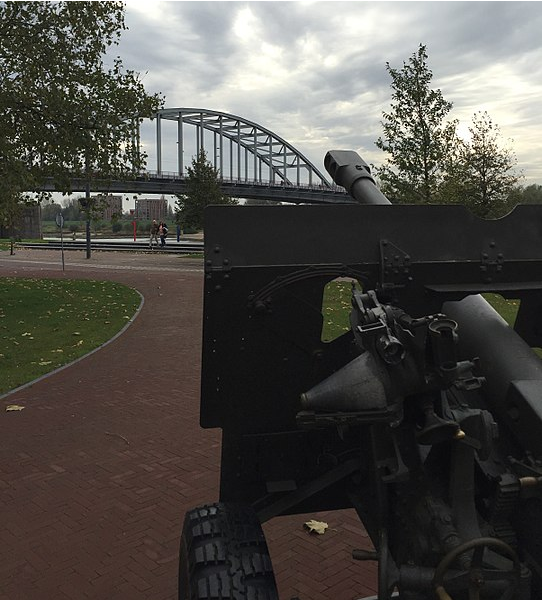
The John Frost Bridge, seen from the Airborne memorial
Liberation
Main article: Liberation of Arnhem
A second battle of Arnhem took place in April 1945 when the city was liberated by the British 49th (West Riding) Infantry Division fighting as part of the First Canadian Army.
Just outside Arnhem, in the town of Oosterbeek the Commonwealth War Graves Commission built the Arnhem Oosterbeek War Cemetery which contains the graves of most of those killed during the September landings, and many of those killed in later fighting in the area.
The city also hosted the 1980 Summer Paralympics.
七、其他信息
The capital of the province of Gelderland, Arnhem has a rich and eventful past, partly reflected in a number of monumental buildings. Set in the heart of green surroundings, the town is contained by the Veluwe on one side and the forelands on the other.
Arnhem is best known as the site of one of the most infamous battles of World War 2. It is famous for its spectacular Burgers' Zoo and the Open air museum, which brings the past to life with authentic buildings and objects. And its known as a fashion city which offers a great shopping experience.
Though Operation Market Garden liberated much of the Netherlands from Nazi occupation, established a foothold from which the Allies could make later offensives into Germany and showed the courage and determination of the Allied forces in Arnhem, it remained a costly failure, with lasting consequences.
Conclusion. Operation Market Garden was a tactical defeat for the Allies, as it failed to achieve all its objectives. It failed to secure the key bridge at Arnhem and this meant that they were halted at the Rhine. This probably delayed the eventual Allied victory in western Europe.
Events
Airborne Commemoration (17-26 September)
World Statues Festival (The World Championship of Living Statues)
Sonsbeek Theater Avenue
Free Your Mind Festival
Dancetour
De Rabo Bridge to Bridge (Marathon)
UITboulevard (Cultural Festival)
Sprookjesfestival (Fairy tale Festival)
King's Day
Sinterklaas
Sport
The National Sports Centre Papendal is the national sports development centre of the Netherlands, located in Arnhem. The first event held at Papendal was the 1980 Summer Paralympics, from June 21 to July 5. However the site was formally adopted and developed from 1993, after the merger of the Dutch National Olympic Committee (NOC) and the Nederlandse Sport Federatie (NSF).
NOC*NSF have 90 affiliated national sports organizations, representing about 2700 individual sports clubs. Papendal is also the training location of football club Vitesse Arnhem, and the club's youth development system. Supporting facilities include a conference centre and hotel.
In preparation for the 2012 Summer Olympics, in 2011 the facility built a replica of the proposed BMX racing track at the London Velopark venue. The track will host the second event on the 2011 UCI BMX World Championships, on the 27 and 28 May 2011.
Since January 2013 Sports Centre Papendal officially split from NOC * NSF and thus as organization demerges. This split offers Sports Centre Papendal many commercial benefits. There are facilities for various sports, including athletics, cycling and more.
Sport in the city is principally focussed on its association football club Vitesse Arnhem and its stadium the GelreDome built for the UEFA Euro 2000. The club has enjoyed some success in the Eredivisie and has featured in the UEFA Cup competition. Their best result in the Eredivisie was third place in 1997–98. The club won the KNVB Cup in 2016–17.
Introdans is a dance company based in the city of Arnhem. In 2009 the Ministry of Education, Culture and Science designated Introdans part of the basic national infrastructure. In 2016 was the Giro d'Italia in Arnhem.
八、联系方式

Ahmed Marcouch.
Ahmed Marcouch (Arabic: أحمد مركوش; born 2 May 1969) is a Moroccan-Dutch politician and former police officer, civil servant and educator serving as Mayor of Arnhem since 2017.
Preceded by Herman Kaiser
Boele Staal (Interim)
Member of the House of Representatives
Addresses of municipal information centresCity hall
City hall, Koningstraat 38, 6811 DG Arnhem (Centre)
Kronenburgpassage 2
6831 EP Arnhem (Vredenburg/Kronenburg)
Postal address
City of Arnhem, PO Box 9029, 6800 EL Arnhem
telephone: +31 (0) 26 377 46 81
Facebook: Gemeente Arnhem@gemeentearnhem
Twitter:Gemeente Arnhem@gemeentearnhem
